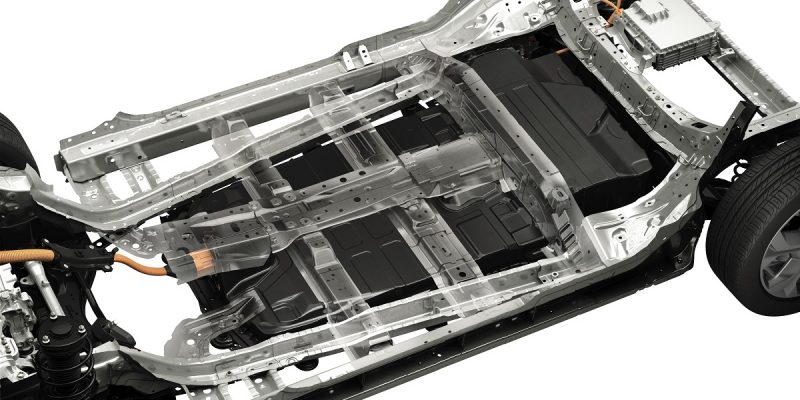Batteries, as a key component of electric mobility, are not just a standard product but rather an integral component of the vehicle architecture.
In addition to continuous improvement of the current generation of lithium-ion battery systems and the further development of the cells bought on the market, research is fully underway for the next generation of battery systems. This includes work on battery management system, a complex process, as well as heat management, which is decisive for the life and performance of a battery pack.
The next generation of batteries could emerge in the form of lithium metal, solid-state technology, which promises greater range and improved safety. Overall, a major step forward in battery tech will consist of a new chemistry and this entails changing either the anode, the cathode or the electrolyte. A report from the University of Michigan, written by Jeff Sakamoto and Neil Dasgupta, U-M associate professors of mechanical engineering, who have been focusing on lithium metal, solid-state batteries (SSBs) over the past decade, indicated lithium metal solid-state batteries would not require the heavy and bulky battery management system that lithium-ion batteries need to maintain durability and reduce the risk of fire.
Gartner analyst Pedro Pacheco pointed out several existing technologies, and some others still at a very early stage, will compete towards automotive mass adoption and it is also likely there will be several different technologies co-existing in parallel for some time. “In my opinion, the next generation of EV batteries will be solid state lithium batteries but going beyond that, what I’d call the next-next battery tech, it’s still pretty much open,” he said.
Lithium-Air, a type of metal-air battery that uses a lithium metal anode, and oxygen from the air as its cathode, could be one such approach, Pacheco explained, as could Lithium-Metal, where adding carbon elements to strengthen the performance of the lithium anode. “Lithium-Air technology has the greatest energy density claims of the metal-air chemistries that, it is hoped, will revolutionize electric mobility,” he said. “There are several other solutions being developed, where the carbon or graphene are used for the anode or cathode.”
Material improvements also have the potential to raise energy density, which means automakers can achieve a good level of driving range and performance while at the same time reducing the size of the battery. “This, obviously, will make it easier to integrate the battery into the vehicle architecture owing to a more compact form factor,” Pacheco said.
On the other hand, some future technologies may lead to the market deployment of “structural or massless batteries”, which describes a battery technology that uses the vehicle structure to store electricity. “Consequently, battery weight would no longer be an issue, given that energy would be stored on a physical structural element of the vehicle body or floorpan,” he said.
Recycling must improve
Pacheco noted sustainability is also a huge problem currently, pointed out he didn’t know anyone in the industry who is recycling their EV batteries to 100% of its content on a regular basis. “Even though EV performance has improved dramatically over the last 10 years, recyclability tech and investment are lagging way behind,” he said. “Considering the number of EVs that will be on the road by the end of the decade, such a situation is not sustainable.
To Pacheco’s mind, this is a point that must be addressed urgently. “As EVs are being touted as the better way forward from an environmental standpoint, it’s important the industry doesn’t create a totally new environmental problem, like landfills of end-of-life batteries, even as it solves the problem of tailpipe emissions and carbon footprint,” he said.
Otmar Bitsche, electrics/electronics development, and director of electro-mobility for Porsche, explained the main measures to increase fast charging capability include the significant increase of silicon on anode side, the reduction of cell resistance, high conductivity electrolytes and a superior cooling system of the pack. “You have to consider various technology fields for further improvement,” Bitsche said. “That includes further increasing the nickel content of the cathodes and better treatment of the material to avoid gassing, and countermeasure for swelling and early degradation of anodes. We also need new recipes for higher stability and conductivity of the electrolytes.”
In the future, solid state batteries will come with lithium metal anode but he noted there are still a lot of challenges to overcome towards industrialization. While on a lab scale promising results are visible, scaling up in size and volume is still a major challenge. “We still have to reduce weight and volume of the pack. That leads to a further increase of volumetric and gravimetric energy density,” he said. “We are also working on further improvement of the fast-charging capability to reduce travel time.”
In order to meet these challenges, Bitsche noted Porsche has development teams on various fields, including cell design and chemistry and mechanical and electrical design of the battery pack and integration. “Thermal management, battery testing and battery control algorithms are other areas where Porsche is active in development,” he said. Among the key differentiators for consumers buying electric vehicles, charging performance, energy density, driving performance, safety and sustainability will be the most critical elements, Bitsche said.
by Nathan Eddy
Source: https://www.tu-auto.com




